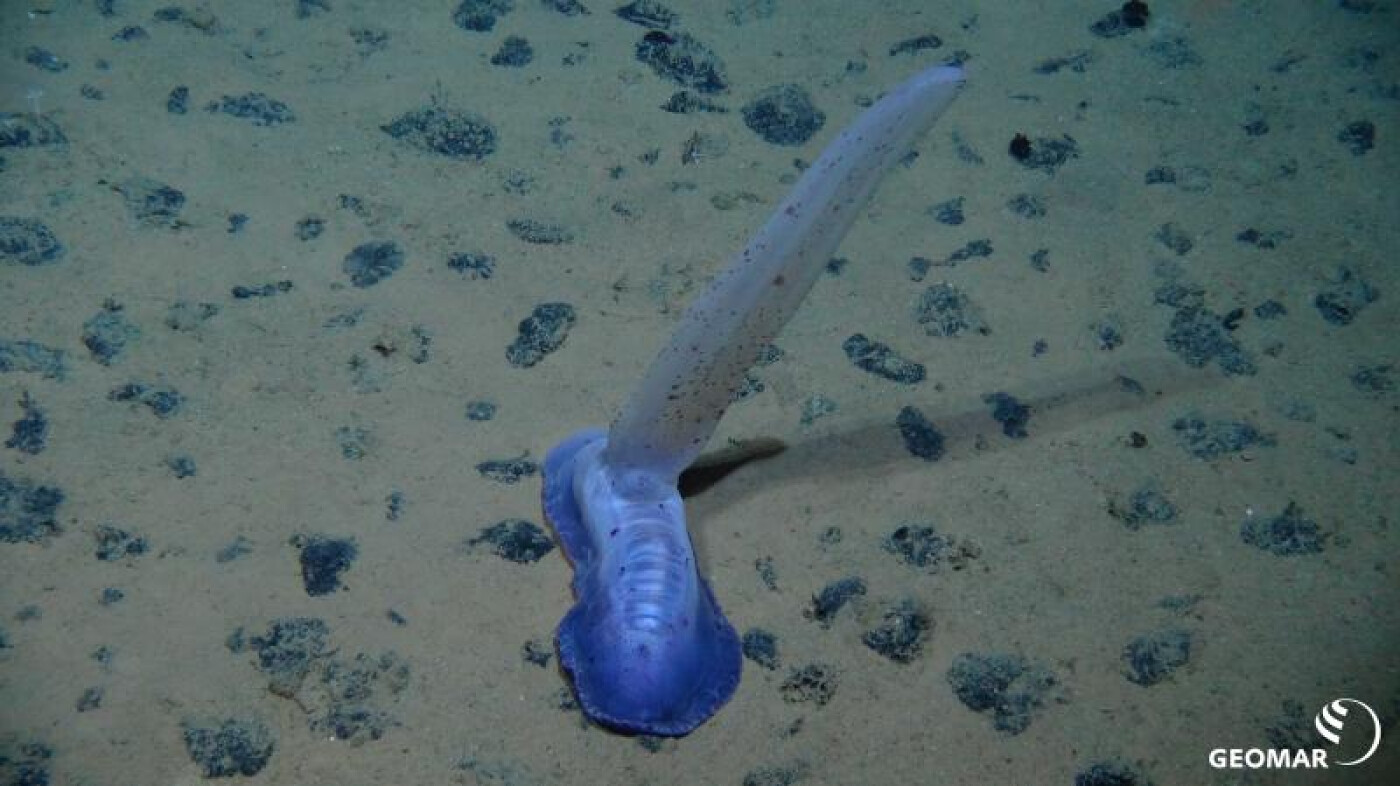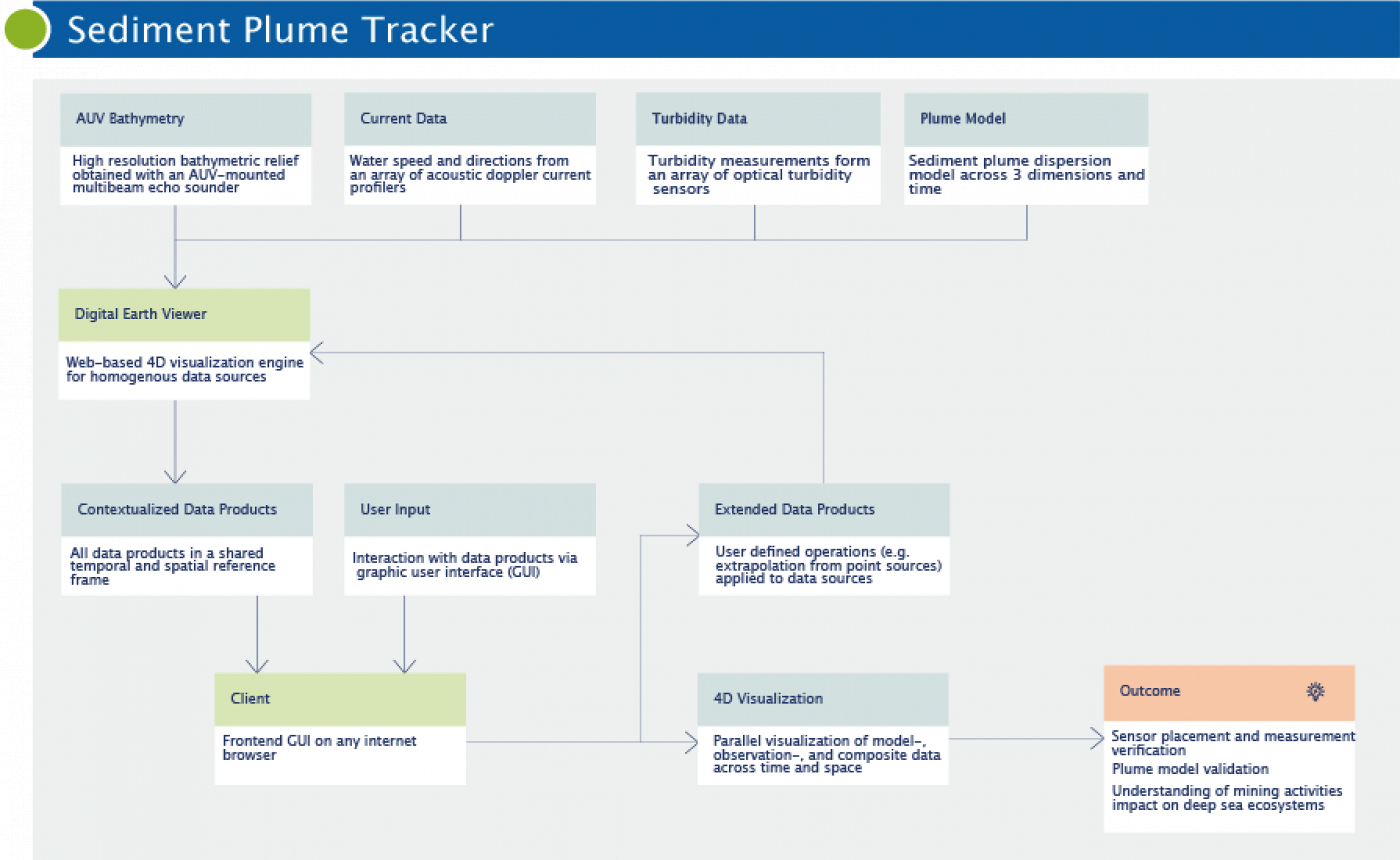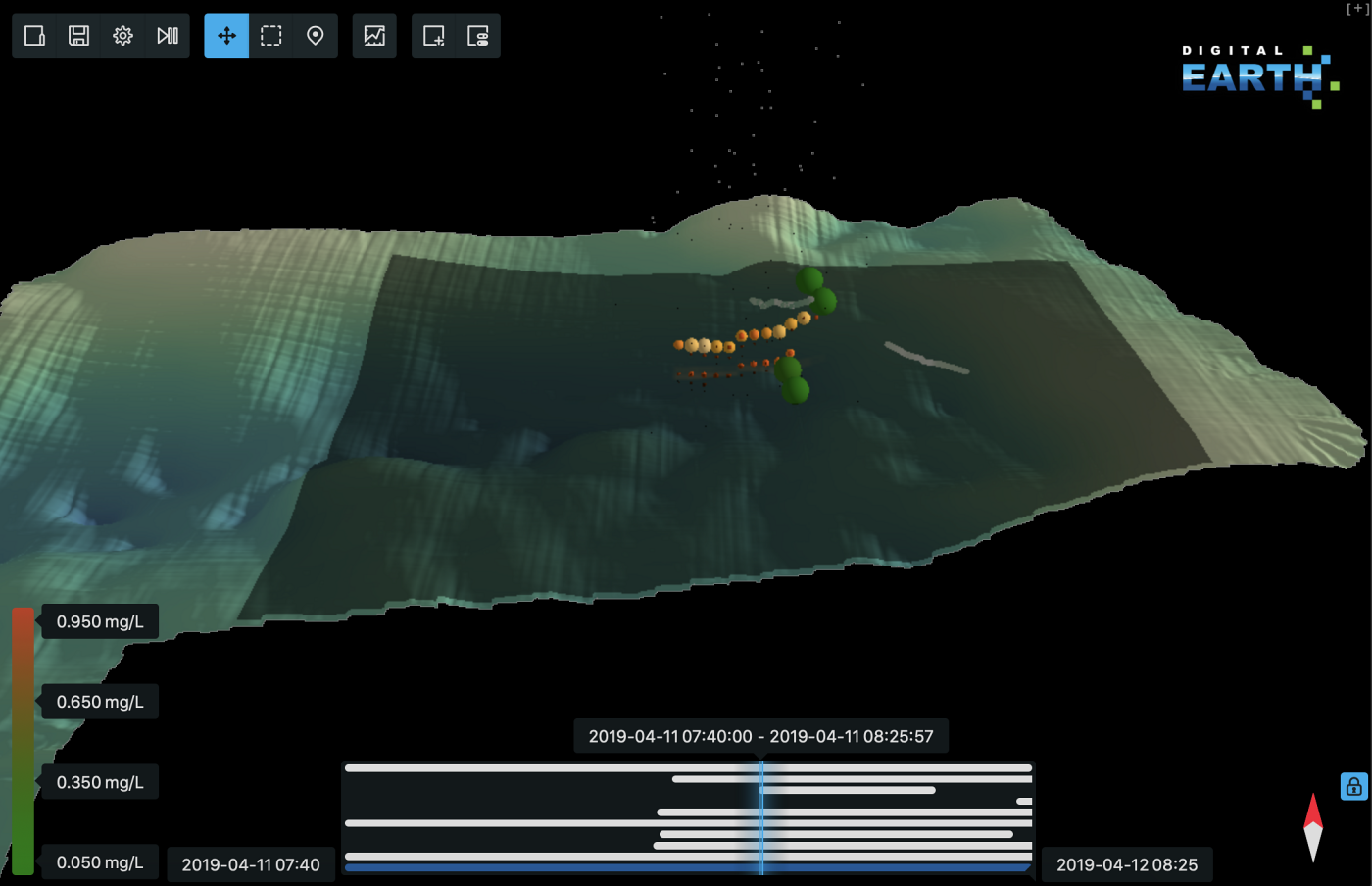
Sediment Plume Application Case
Deep-sea mining represents a source of metals essential for the green revolution, but at the same time threatens the balance of delicate ecosystems. The Sediment-Plume application case explores the impact mining activities could have on the deep-sea life.

We combine in situ measurement data from multibeam echo sounders, acoustic current profilers, and optical turbidity sensors with sediment deposition models to generate a 4D (spatiotemporal) reconstruction of the sediment plume dispersion and precipitation processes. The Digital Earth Viewer is then used to visualise the contextualised datasets and provides a virtual exploration environment to asses the consequences of future mining efforts. A live instance of the viewer can be found under the following link: https://digitalearthviewer-plume.geomar.de
